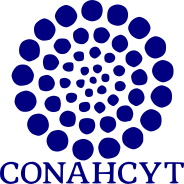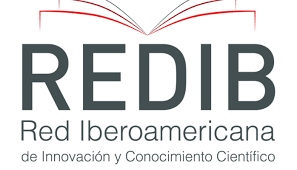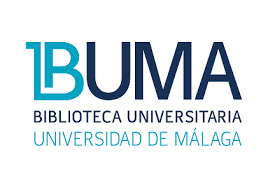Información para autores/as
Instrucciones a Autores
POLIBOTÁNICA , revista botánica internacional del Instituto Politécnico Nacional, incluye exclusivamente artículos que representen los resultados de investigaciones originales en el área. Tiene una periodicidad de dos números al año, con distribución y Comité Editorial Internacional.
Todos los artículos enviados a la revista para su posible publicación son sometidos por lo menos a un par de árbitros, reconocidos especialistas nacionales o internacionales que los revisan y evalúan y son los que finalmente recomiendan la pertinencia o no de la publicación del artículo, cabe destacar que este es el medio con que contamos para cuidar el nivel y la calidad de los trabajos publicados.
PARA LA PUBLICACIÓN DE TRABAJOS
Se aceptarán aquellos originales que se ajusten a las prescripciones siguientes:
POLIBOTÁNICA incluye exclusivamente artículos que representen los resultados de investigaciones originales que no hayan sido publicados.
1. El autor deberá anexar una carta membretada y firmada dirigida al Editor, donde se presente el manuscrito, así como la indicación de que el trabajo es original e inédito, ya que no se aceptan trabajos publicados o presentados anterior o simultáneamente en otra revista, circunstancia que el autor(es) deberá declarar expresamente en la carta de presentación de su artículo.
2. Al quedar aceptado un trabajo, su autor no podrá ya enviarlo a ninguna otra revista nacional o extranjera.
3. Los artículos deberán estar escritos en español, inglés, francés o portugués. En el caso de estar escritos en otros idiomas diferentes al español, deberá incluirse un amplio resumen en este idioma.
4. Como parte de los requisitos del CONACYT, POLIBOTÁNICA ahora usa la plataforma del Open Journal System (OJS); para la gestión de los artículos sometidos a la misma.Así que le solicitamos de la manera más atenta sea tan amable de registrarse y enviar su artículo en la siguiente liga: www.polibotanica.mx/ojs/index.php/polibotanica
a) cargar el trabajo en archivo electrónico de office-word, no hay un máximo de páginas con las siguientes características:
b) en páginas tamaño carta, letra times new roman 12 puntos a doble espacio y 2 cm por margen
5. Las figuras, imágenes, gráficas del trabajo deben estar incluidas en el documento de Word original:
a) en formato jpg
b) con una resolución mínima de 300 dpi y un tamaño mínimo de 140 mm de ancho
c) las letras deben estar perfectamente legibles y contrastadas
6. Todo trabajo deberé ir encabezado por:
a) Un título tanto en español como en inglés que exprese claramente el problema a que se refiere. El formato para el título es: negritas, tamaño 14 y centrado.;
b) El nombre del autor o autores, con sus iniciales correspondientes, sin expresión de títulos o grados académicos. El formato para los autores es: alineados a la izquierda, cada uno en un párrafo distinto y tamaño 12. Cada autor debe tener un número en formato superíndice indicando a qué afiliación pertenece.;
c) La designación del laboratorio e institución donde se realizó el trabajo.La(s) afiliación(es) debe(n) estar abajo del grupo de autores. Cada afiliacióndeberá́ estar en un párrafo y tamaño 12. Al inicio de cada afiliaciónestará́ el número en superíndice que lo relaciona con uno o más autor/es.
d) El autor para correspondencia deberá́ estar en el siguiente párrafo, alineado a la izquierda, tamaño 12.
7. Todo trabajo deberá estar formado por los siguientes capítulos:
a) RESUMEN y ABSTRACT. Palabras clave y Key Words. El resumen debe venir después de la afiliación de los autores, alineado a la izquierda, tamaño 12. La palabra “Resumen: / Abstract: ” debe venir en negritas y con dos puntos. El texto del resumen debe empezar en el párrafo siguiente, tamaño 12 y justificado. El texto “Palabras clave / Key Words:” debe venir en negritas seguido de dos puntos. Cada una de las palabras clave deben estar separadas por coma o punto y coma, finalizadas por punto.
b) INTRODUCCIÓN y MÉTODOS empleados. Cuando se trate de técnicas o métodos ya conocidos, solamente se les mencionará por la cita de la publicación original en la que se dieron a conocer. El formato para todas las secciones en esta lista es: negritas, tamaño 16 y centrado.
c) RESULTADOS obtenidos. Presentación acompañada del número necesario de gráficas, tablas, figuras o diagramas de tamaño muy cercano al que tendrá su reproducción impresa (19 x 14 cm).
d) DISCUSIÓN concisa de los resultados obtenidos, limitada a lo que sea original y a otros datos relacionados directamente y que se consideren nuevos.Los apartados de Resultados y Discusión deben presentarse por separado
e) CONCLUSIONES.
ESPECIFICACIONES DE FORMATO PARA EL CUERPO DEL TRABAJO
1. Secciones/Subtítulos de párrafo: Fuente tamaño 16, centrado, en negritas, con la primera letra en mayúscula.
2. Subsecciones/Subtítulos de párrafo secundarios : Fuente tamaño 14, centrado, en negritas, con la primera letra en mayúscula. Cuando existan subsecciones de subsección formatear en tamaño 13 negrita y centrado.
3. Cuerpo del texto: Fuente tamaño 12, justificado. NO debe haber saltos de línea entre párrafos.
4. Las notas de pie de página deben estar al final de cada página, fuente tamaño 12 justificadas.
5. Cita textual con más de tres líneas: Fuente tamaño 12, margen izquierdo de 4 cm.
6. Título de imágenes: Fuente tamaño 12, centrado y en negritas, separado por dos puntos de su descripción. Descripción de las imágenes: tamaño 12.
7. Notas al pie de las imágenes: Fuente tamaño 12 y centradas con respecto a la imagen, la primera letra debe estar en mayúsculas.
8. Imágenes: deben estar en el cuerpo del texto, insertadas en formato png o jpg, a por lo menos 300 dpi d resolución y centradas. Las imágenes deben estar en línea con el texto. Se consideran imágenes: gráficos, cuadros, fotografías, diagramas y, en algunos casos, ecuaciones.
9. Tablas de tipo texto: El título de las columnas de las tablas debe estar en negritas y los datos del cuerpo de la tabla con fuente normal. Los nombres científicos deben estar en itálicas. No se aceptan las Tablas como imágenes.
10. Notas al pie de la tabla: Fuente tamaño 12 y centradas con respecto a la tabla, la primera letra debe estar en mayúsculas.
11. Ecuaciones pueden estar en Mathtype 1 o en imagen. En este último caso, seguir instrucciones del punto 8.
12. Citas del tipo autor y año deben estar entre paréntesis, con el apellido del autor seguido por el año (Souza, 2007), primera letra en mayúscula.
13. Titulos de tabla, notas al pie de tabla y pie de figura en articulos en español con su correspondiente traducción al inglés.
8. LITERATURA CITADA, Se tomara como base el Estilo APA para las Referencias Bibliográficas, formada por las referencias mencionadas en el texto del trabajo y en orden alfabético. Es obligatorio utilizar Mendelay® (software bibliográfico). El propósito de utilizar este tipo de software es asegurar que los datos contenidos en las referencias están correctamente estructurados y corresponden a las citas del cuerpo del texto.
ESTRUCTURA Y FORMATO DE LOS AGRADECIMIENTOS Y REFERENCIAS BIBLIOGRÁFICAS
1. Los Agradecimientos deberán estar después de la última sección del cuerpo del texto. Esta información debe tener como título la palabra “Agradecimientos”, o su equivalente en otro idioma, en negritas, tamaño 12 y centrado. El texto de esta información debe estar en tamaño 12 justificado.
2. Las Referencias bibliográficas deben estar en orden alfabético sin salto de línea de párrafo, alineados a la izquierda, en tamaño 12.
3. Apéndices, anexos, glosarios y otros materiales deben incluirse después de las referencias bibliográficas. En caso de que estos materiales sean extensos deberán ser creados como archivos PDF.
9. REVISIÓN Y PUBLICACIÓN
Todos los artículos enviados a la revista para su posible publicación serán sometidos a una revisión “doble ciego”, se enviaran por lo menos a un par de árbitros, reconocidos especialistas nacionales o internacionales que los revisarán y evaluarán y serán los que finalmente recomienden la pertinencia o no de la publicación del artículo, cabe destacar que este es el medio con que contamos para cuidar el nivel y la calidad de los trabajos publicados.
Una vez aceptado el trabajo, se cobrarán al autor(es) la cantidad correspondiente según el catálogo institucional por página más IVA, independientemente del número de fotografías que contenga.



















